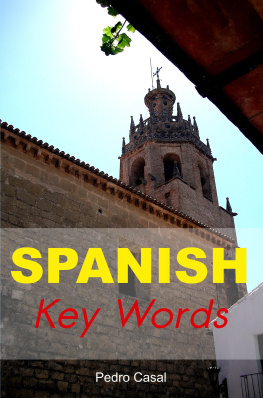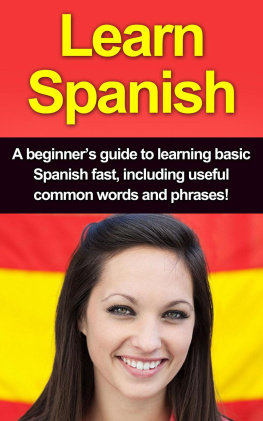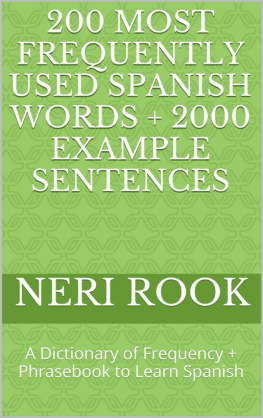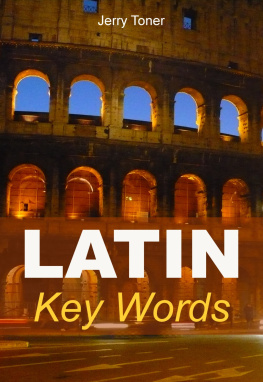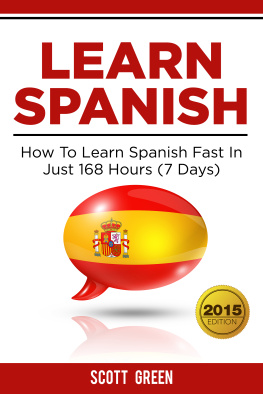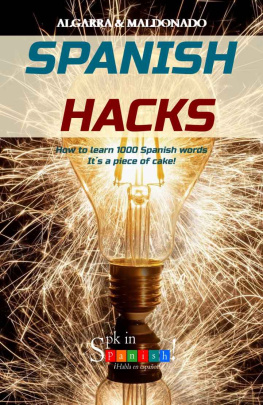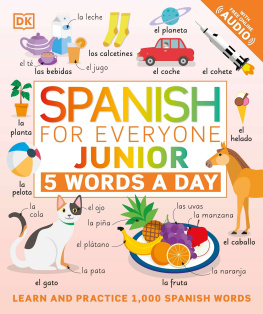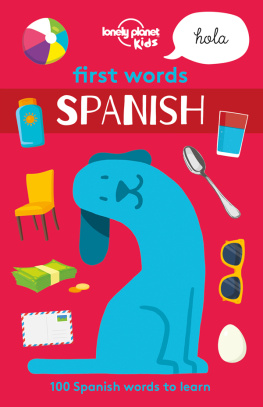Pedro Casal - Spanish Key Words: The Basic 2000 Word Vocabulary Arranged by Frequency. Learn Spanish Quickly and Easily.
Here you can read online Pedro Casal - Spanish Key Words: The Basic 2000 Word Vocabulary Arranged by Frequency. Learn Spanish Quickly and Easily. full text of the book (entire story) in english for free. Download pdf and epub, get meaning, cover and reviews about this ebook. year: 2017, publisher: The Oleander Press, genre: Detective and thriller. Description of the work, (preface) as well as reviews are available. Best literature library LitArk.com created for fans of good reading and offers a wide selection of genres:
Romance novel
Science fiction
Adventure
Detective
Science
History
Home and family
Prose
Art
Politics
Computer
Non-fiction
Religion
Business
Children
Humor
Choose a favorite category and find really read worthwhile books. Enjoy immersion in the world of imagination, feel the emotions of the characters or learn something new for yourself, make an fascinating discovery.
- Book:Spanish Key Words: The Basic 2000 Word Vocabulary Arranged by Frequency. Learn Spanish Quickly and Easily.
- Author:
- Publisher:The Oleander Press
- Genre:
- Year:2017
- Rating:3 / 5
- Favourites:Add to favourites
- Your mark:
Spanish Key Words: The Basic 2000 Word Vocabulary Arranged by Frequency. Learn Spanish Quickly and Easily.: summary, description and annotation
We offer to read an annotation, description, summary or preface (depends on what the author of the book "Spanish Key Words: The Basic 2000 Word Vocabulary Arranged by Frequency. Learn Spanish Quickly and Easily." wrote himself). If you haven't found the necessary information about the book — write in the comments, we will try to find it.
Learn Spanish Fast!
* New for 2017 Completely revised and updated
* A simple, fast, proven way to learn Spanish with ease
* First 500 words provides 75% common usage
* Easy units - your confidence grows as your vocabulary grows
Spanish Key Words provides an easy route to mastering excellent basic Spanish. Easy-to-learn Unit Structure gets you the words you need to know quickly and easily. One hundred easy-to-master units of 20 words each. Learn Spanish quickly and simply.
These words are the essential foundation stones on which you intuitively build your language framework:
The first five units (100 words) account for 50% of normal conversational Spanish.
The first 500 words account for 75% of normal conversational usage. The full 2,000 words will equip you for nearly all word occurrences in modern Spanish usage in speech, newspapers, books, television, internet etc. Also provides an all-in-one basic Spanish-English dictionary and an all-in-one basic English-Spanish Dictionary.
The perfect aid - to learn Spanish by using the simplest, most logical way to pick up a vocabulary of ten thousand words from two thousand. Spanish Key Words presents you with the 2,000 word basic vocabulary ordered by frequency of occurrence in modern usage - in one hundred simple units. The book is a learning aid benefiting from computer analysis of a million words and consists of a list of the commonest two thousand key words in Spanish, with their meanings in English, arranged in decreasing order of frequency.
A simple, fast, proven way to learn Spanish with ease.
Pedro Casal: author's other books
Who wrote Spanish Key Words: The Basic 2000 Word Vocabulary Arranged by Frequency. Learn Spanish Quickly and Easily.? Find out the surname, the name of the author of the book and a list of all author's works by series.

